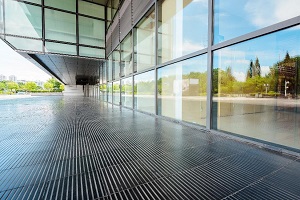- Advanced Sensors
- Building Innovations
- Intelligent Buildings
The Sensors Are Coming

Data is the key to transforming regular facilities into intelligent buildings. The key to collecting that data is the proliferation of connected sensors. Buildings that gather and analyze information on occupancy, CO2 levels, light levels, humidity, and temperature are able to operate more effectively. As the Internet of Things gains adoption in the broader business world, building sensors are increasingly being connected to the Internet to drive energy efficiency improvements with substantial cost savings. Guidehouse Insights puts the current size of the advanced sensor market at $1.2 billion in 2016 and expects that figure to nearly triple over the next decade.
As data collection has evolved from monitoring building conditions to being able to monitor individual behavior, some of those individuals are beginning to get creeped out. A recent Marketplace article explores some of the sensor technologies gaining adoption in commercial offices and came away wholly uncomfortable at the level of data employers can collect.
Hanlon's Razor
In all likelihood, these fears are likely irrational and overblown. Gathering, processing, and analyzing data remains a significant challenge in building operations, particularly for existing facilities. Most building owners simply do not have the bandwidth and technological sophistication to use that data for nefarious purposes. It will likely take several years for building technology to evolve to the point where privacy is a rational concern. However, it is an important conversation to have now.
The promise of increased efficiency from better data and concerns about privacy are two sides of the same coin. The information that helps facilities operate well can be used to determine how much time an employee spends at their desk. As technology is developed and adopted, occupants need to be a part of the decision-making process. Building technology providers will ultimately need to ensure both physical comfort and emotional comfort around privacy protections.